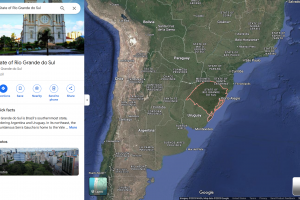Mammals Infected With Highly Pathogenic Avian Influenza (HAPI) Virus
Mammals Infected With Highly Pathogenic Avian Influenza (HAPI) Virus
According to the U.S. Centers for Disease Control and Prevention (CDC) and the Department of Agriculture (USDA), mammalian infections with the highly pathogenic avian influenza (HAPI) virus will be a global concern in 2025. On January 6, 2025, the CDC stated that H5 bird flu is widespread in wild birds worldwide, causing outbreaks in wild birds, mammals, poultry, and dairy cows. Several recent human cases have been reported in U.S. dairy and poultry workers.
In addition, the World Health Organization (WHO) Technical report states that HAPI viruses (bird flu) are evolving, and various mammals are at risk. Furthermore, the U.K. Health Security Agency (UKHSA), World Organisation for Animal Health, the European CDC's Communicable Disease Threats Report, and the Pan American Health Organization (PAHO) have confirmed bears, cats, dogs, dolphins, ferrets, foxes, minks, penguins, sea lions, sea seals, elephant seals, skunks, and other mammals had been infected with HAPI viruses.
On November 18, 2023, the CDC Emerging Infectious Diseases Volume 29, Number 12—December 2023, described the pathology of natural infection with highly pathogenic avian influenza A(H5N1) virus of Eurasian lineage Goose/Guangdong clade 2.3.4.4b in 50 red foxes (Vulpes vulpes), six striped skunks (Mephitis mephitis), four raccoons (Procyon lotor), two bobcats (Lynx rufus), 2 Virginia opossums (Didelphis virginiana), one coyote (Canis latrans), one fisher (Pekania pennanti), and 1 gray fox (Urocyon cinereoargenteus). This research confirmed that the genotype analysis indicates that the HAPI cases represent spillover infections from wild birds.





